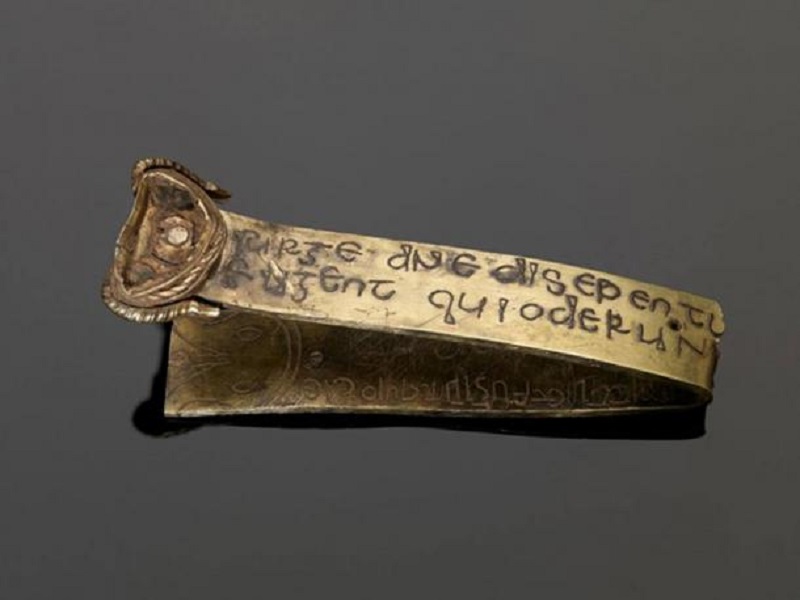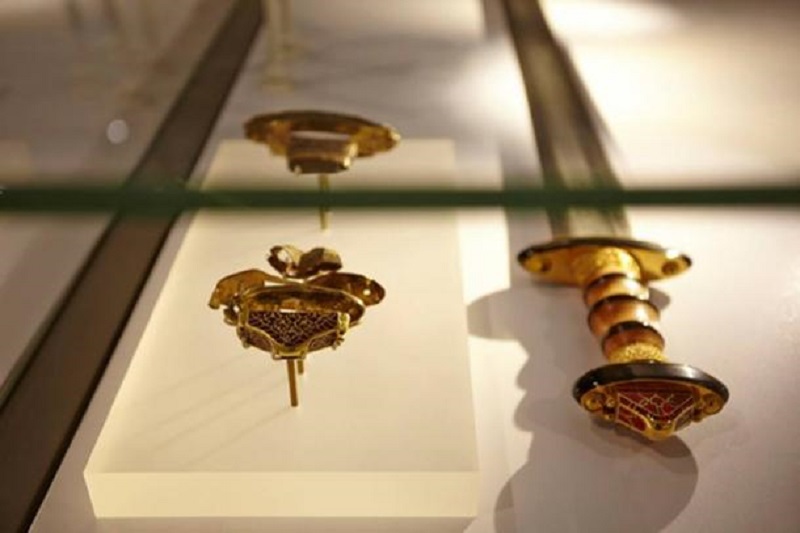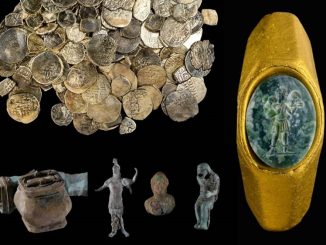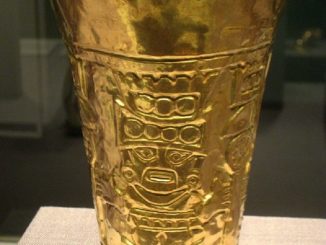Many people like to search with metal detectors in the hope of finding treasures that have some financial value or historical significance. While most people might be lucky to find a few odd things, every once in a while someone finds something truly extraordinary. That’s what happened to Terry Herbert on July 5, 2009 and that’s where the story of the Staffordshire Hoard begins.
One of the exquisite gold pieces of the Staffordhsire Hoard. (Birmingham Museum)
Discover the treasures of Staffordshire
Herbert was using a metal detector to search farmland in the village of Hammerwich, Staffordshire, England, which had just been plowed, when his metal detector signaled that he had found a metal object. He will soon discover that he has, literally and figuratively, struck gold. Herbert’s discovery is the largest known trove of Anglo-Saxon gold and metals, containing more than 3,500 pieces.
Herbert was stunned to discover gold and silver pieces found by his metal detector. He began to collect the pieces he found, which had been scattered over a wide area due to plowing. Over the next five days, Herbert filled 244 bags with gold objects that had been pulled out of the ground.
At this point, he realized that the site must have great historical significance and probably had more gold than he could find on his own. Herbert contacted Duncan Slarke, Finds Liaison Officer for the Staffordshire and West Midlands Portable Antiquities Programme, and the land owner granted permission to excavate the area.

A selection of outstanding works from the Staffordshire Hoard, which have not been cleaned by conservationists, still show traces of soil. ( CC BY 2.0 )
Before long, Birmingham Archeology was on site to conduct an excavation, covering an area of 30 feet by 43 feet (9.14 by 13.11 metres), with the hope of recover all objects that may have been thrown and scattered by plowing operations. Apart from Herbert, the landowner and the excavation team, no one knew the exact location of the operation. It is kept secret to protect the historically significant site. During this excavation, more than 3,500 pieces were discovered.
An announcement of the discovery was made on September 24, 2009, and a website showcasing the works received more than 10 million views within a week. Pieces from the treasure trove were displayed at Birmingham Museum & Art Gallery, until they were declared “treasure” and therefore property of the Crown, worth £3.285 million (about 5 .4 million dollars).
Gold artifacts from hoarding. (Ceramic Museum & Art Gallery)
Another excavation took place in 2010, not to find more fragments but to look for other dating and environmental evidence. In 2012, additional pieces were found during another excavation at the site and were again declared treasure and property of the Crown.
With more than 3,500 pieces discovered, the treasure now contains 5kg of gold and 1.3kg of gold and 1.3kg of silver, making this the largest discovery of Anglo-Saxon gold to date. And now, after 10 years of research and analysis, experts are ready to publish a full account of the Staffordshire Hoard’s artifacts.
What’s in Hoard?
Analysis of the artifacts shows that most of them are of military nature. And that’s not surprising, based on a recent study of the artifacts. As reported by The Independent, archaeologists have decided that ‘It is likely that the treasures […] were captured by the English midlands kingdom of Mercia (perhaps during between three and six encounters major military) from the kingdoms of Northumbria, East Anglia and possibly Wessex. .’
Many of the artifacts of the Staffordshire Hoard are of a military nature. (Birmingham Museum) This is a necklace with a sword hilt, hilt cap and a replica sword.
The hoard did not include the usual Anglo-Saxon gold items such as feminine items, eating utensils or other household items. Most researchers agree that the pieces tend to date from the 7th century, although it is unknown when they were actually buried or deposited in their final location or for what purpose. (although there is no evidence that these pieces were included as part of the monument). human burial).
Some of the pieces in the hoard include parts that have been removed from weapons, crosses, pins, rings, rivets, bands, hilts, hilt plates and fragments. One item of particular interest is a gold band inscribed with a Latin quote from the Old Testament: “Surge Domine et dissipentur inimici tui et fugiant qui oderunt te a facie tend.” (Translation: “Arise, O Lord, let Your enemies be scattered and those who hate You may be driven from Your presence.”)

Gold engraved band from the Staffordshire Hoard. (Birmingham Museum and Art Gallery)
Another strange artifact in the Staffordshire Hoard is a bishop’s miter, which researchers believe may indicate the presence of one of the clerics who played a support role on one of the battlefields whose relics were taken. This is an exciting find as The Independent explains, ‘The headdress – made of beautifully crafted gold, inlaid with garnets and white and dark red glass – dates from the Christian period. re-established over many local kingdoms that would eventually be re-established. become England. It represents the status and prestige of the Church – but is notable in that it is decorated with semi-abstract animal designs typical of pre-Christian Anglo-Saxons as well as seven Christian crosses. Catholicism .’





